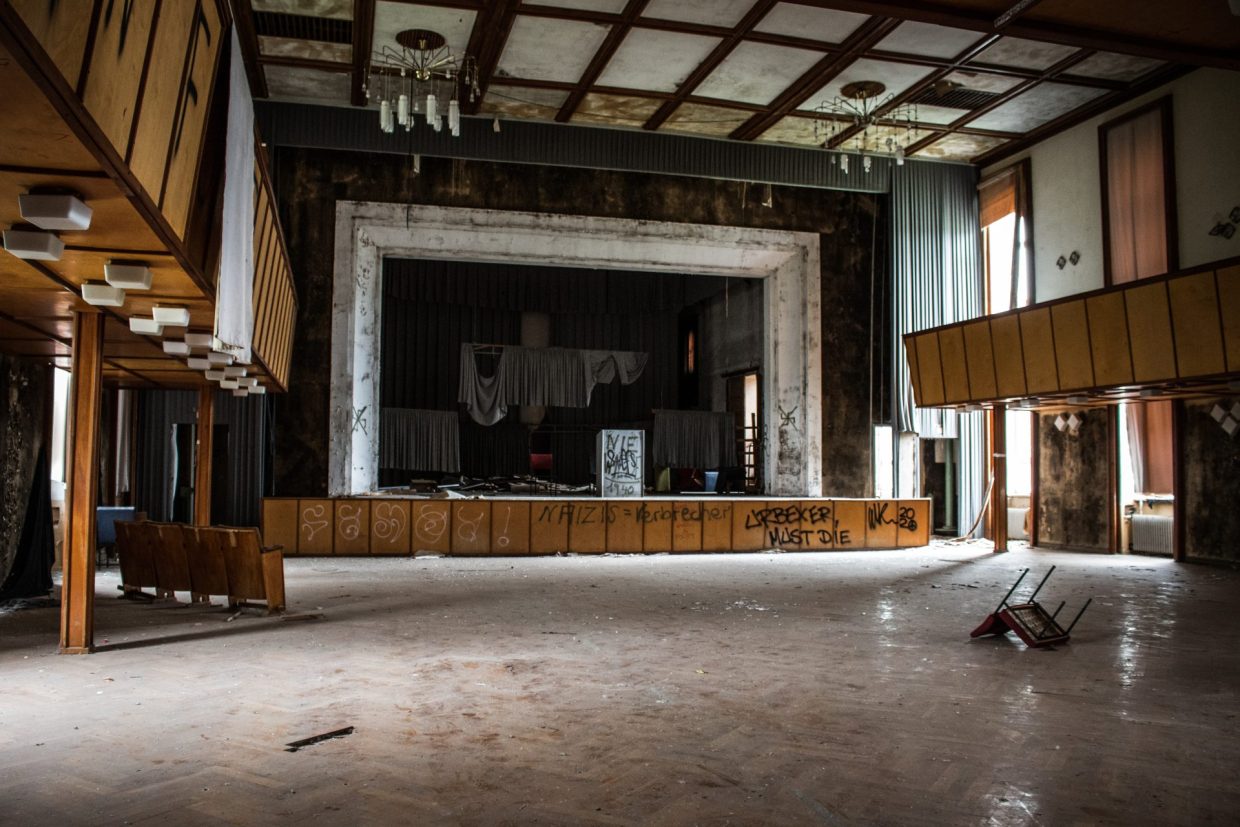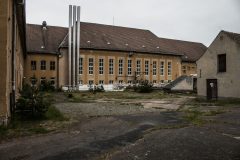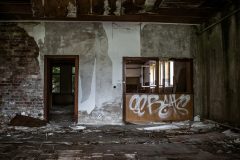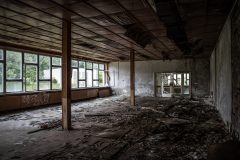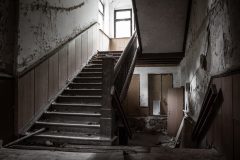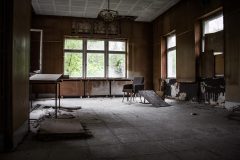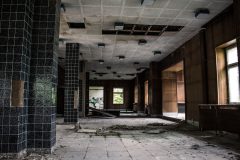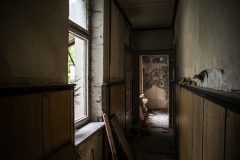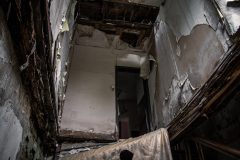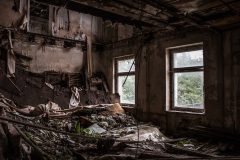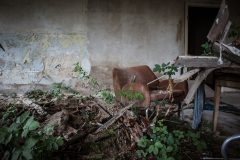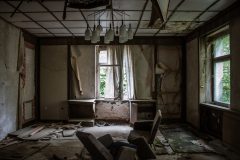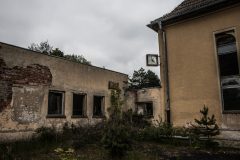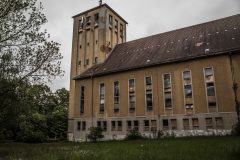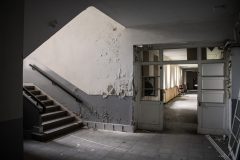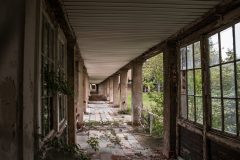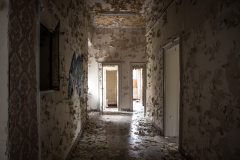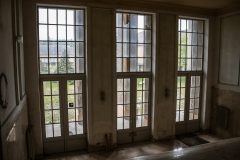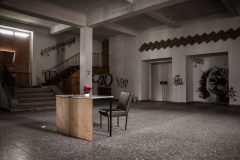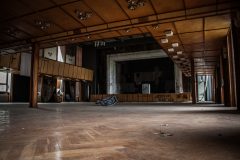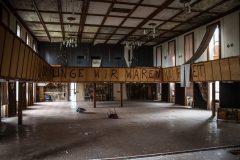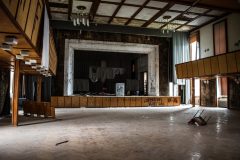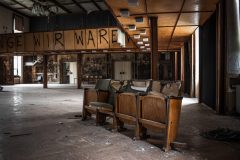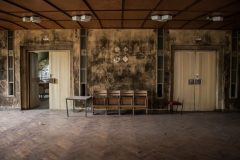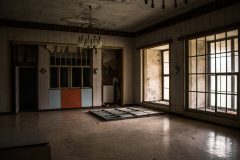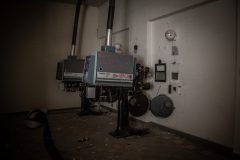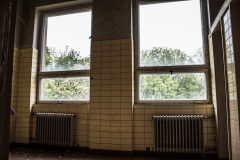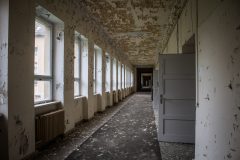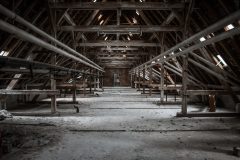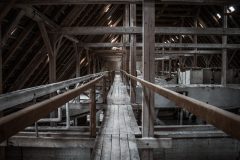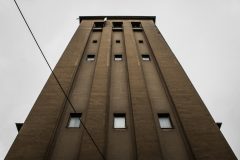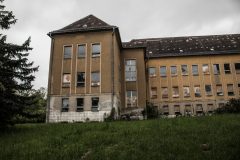Napola, an abbreviation for Nationalpolitische Erziehungsanstalt, was a series of elite schools established by the Nazi Party in Germany during the Third Reich. These schools were intended to educate and train young boys with the aim of creating a future generation of loyal Nazi leaders.
One such Napola was located on the Großer Ziegenberg in Ballenstedt which was founded in 1933. The Ballenstedt Napola was primarily focused on physical education and military training. The curriculum emphasized Nazi ideology, racial purity, militarism, and obedience to the Nazi regime. Students were selected based on their physical abilities and ideological conformity. The goal of the Napola system was to mold young boys into loyal supporters of the Nazi Party and prepare them for leadership roles within the Nazi state. The schools aimed to create a new generation of Nazi elite who would be both physically strong and ideologically committed.
The plan for the school complex was created by government and construction councilor Kurt Ehrlich from Ballenstedt. The functional ensemble encloses a 140-meter long and up to 90-meter wide parade ground. The teaching and administrative buildings form the northern and southern ends. The two-story boarding houses were arranged with two staggered blocks on the longitudinal sides, a common layout for barracks. This arrangement results in mirrored victory runes when viewed from above, which is the symbol of the German Young People. The classrooms in the teaching building are all oriented towards the parade ground. In October 1942, the building was handed over for its intended purpose. When the institution’s director and his office moved in June 1943, it also served as an administrative building. After 1945, the differently sized classrooms were repeatedly renovated and modernized according to current usage requirements.
During World War II, many graduates of the Napola schools, including those from Ballenstedt, were enlisted into the German military and often became officers. After the end of the war and the defeat of Nazi Germany, the Napola schools were disbanded.
Soon after, the SED utilized the area as a Bezirksparteischule. From 1956 to 1989, a span of 33 years, over 16,000 SED party members from the GDR districts of Halle and Magdeburg completed one-year courses at the now called “Bezirksparteischule Wilhelm Liebknecht” in Ballenstedt. The school had the task of ideologically training young people to become potential leaders in the GDR’s party and state. At the Ziegenberg site, up to 600 participants could learn and live simultaneously once the planned capacity was reached.
The area of the school was a largely autonomous, fenced, and guarded campus. Access was generally denied to individuals who did not belong to the collective school, which consisted of around 150 employees, including teachers and staff responsible for daily tasks. On the campus was a café, a club house, a grocery store, a bookstore, a hair salon, and a sauna. Until 1989, the large auditorium was used for youth initiation ceremonies in the city of Ballenstedt. The annual small press festival of the newspaper “Freiheit,” the “organ of the Halle District Leadership of the SED,” also took place on the grounds of the school until 1967.
The school ceased its activities in November 1989 with the Peaceful Revolution. On July 1, 1990, the city of Ballenstedt took over the property. The establishment was privatized soon after. In 1991, it was handed over to the Treuhand. The Treuhand invested in modernization, and as a result, the ‘Fachhochschule für öffentliche Verwaltung des Landes Sachsen-Anhalt’ moved in and remained there until 1995. Some buildings, such as the house with the tower, are owned by an Austrian investor, while the remaining buildings belong to the city of Ballenstedt. Since the mid-1990s, the complex has been under monument protection. The overall use of the building complex remained uncertain for a long time.
In late 2018, two Chinese investors purchased nearly all of the site. Their plan is to develop the area into a center for Traditional Chinese Medicine, martial arts, and culture. The buildings were said to house a nursing facility, a center for ceramic art and culture, a medical education facility, and a sports center. While the health center was expected to open in 2019, the other facilities are scheduled for opening from 2024 onwards. However as of 2023 the plans for the property came to a hold leaving the buildings in a semi-abandoned state. Be careful when exploring it yourself, it’s watched over by security.
Our location rating:
